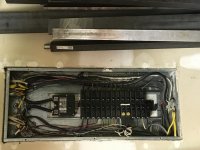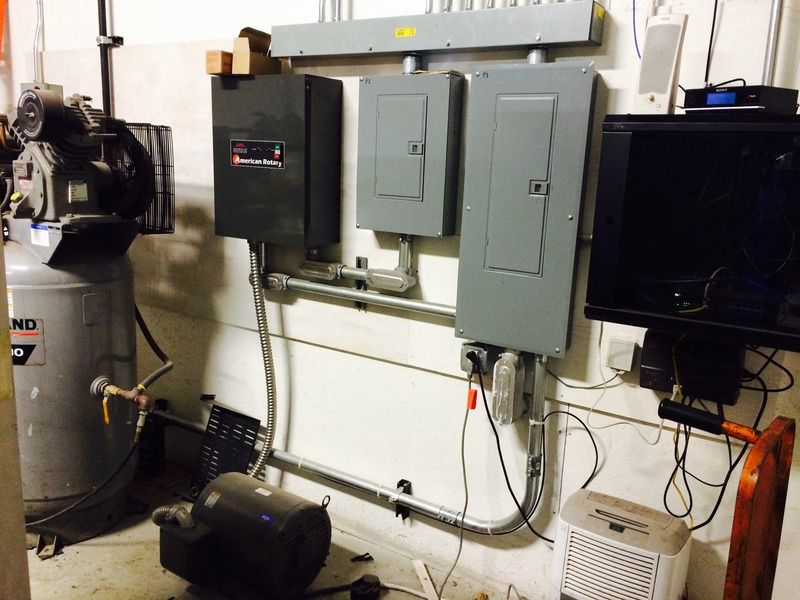kumaichi
Aluminum
- Joined
- Oct 22, 2014
- Location
- Charlotte, NC
My previous post was closed due to "meaningless title" so hopefully this title will work?
Onto the questions:
Hi All,
I'm not so electrically inclined so I decided to just buy an American Rotary 30HP phase converter and was wondering if I could get some wiring advice. I have my main electrical panel out in the garage that is installed flush between two studs (it's a finished garage so there's drywall as well). My question is, what is the best way to run the wires inside the wall and then out to the RPC panel? Should I punch a hole through the side of the electrical panel and run it through the stud? Is there some preferred method for bringing the 1ga wire out through the drywall to the RPC panel? The instructions that came with the panel said to use an 80-amp breaker in my single phase box and run 1ga wire from the breaker to the RPC panel. Run 8ga wire from the RPC panel to the idler motor and finally run 4ga wire from the RPC panel to my 3-Phase electrical panel (which will require running the 4ga wire back into the drywall for the 3-phase panel that is installed between two studs).
Thanks in advance for any input,
Craig
John asked me a question in the previous thread about my main panel and the wire it's connected to. My main electrical panel is a 200amp service that has huge aluminum wire connected to the main service breaker. The sales person over at American Rotary said that with the 80amp breaker in my main service that I'd need to be mindful of what else is pulling a load when I fire up the RPC.
Onto the questions:
Hi All,
I'm not so electrically inclined so I decided to just buy an American Rotary 30HP phase converter and was wondering if I could get some wiring advice. I have my main electrical panel out in the garage that is installed flush between two studs (it's a finished garage so there's drywall as well). My question is, what is the best way to run the wires inside the wall and then out to the RPC panel? Should I punch a hole through the side of the electrical panel and run it through the stud? Is there some preferred method for bringing the 1ga wire out through the drywall to the RPC panel? The instructions that came with the panel said to use an 80-amp breaker in my single phase box and run 1ga wire from the breaker to the RPC panel. Run 8ga wire from the RPC panel to the idler motor and finally run 4ga wire from the RPC panel to my 3-Phase electrical panel (which will require running the 4ga wire back into the drywall for the 3-phase panel that is installed between two studs).
Thanks in advance for any input,
Craig
John asked me a question in the previous thread about my main panel and the wire it's connected to. My main electrical panel is a 200amp service that has huge aluminum wire connected to the main service breaker. The sales person over at American Rotary said that with the 80amp breaker in my main service that I'd need to be mindful of what else is pulling a load when I fire up the RPC.




